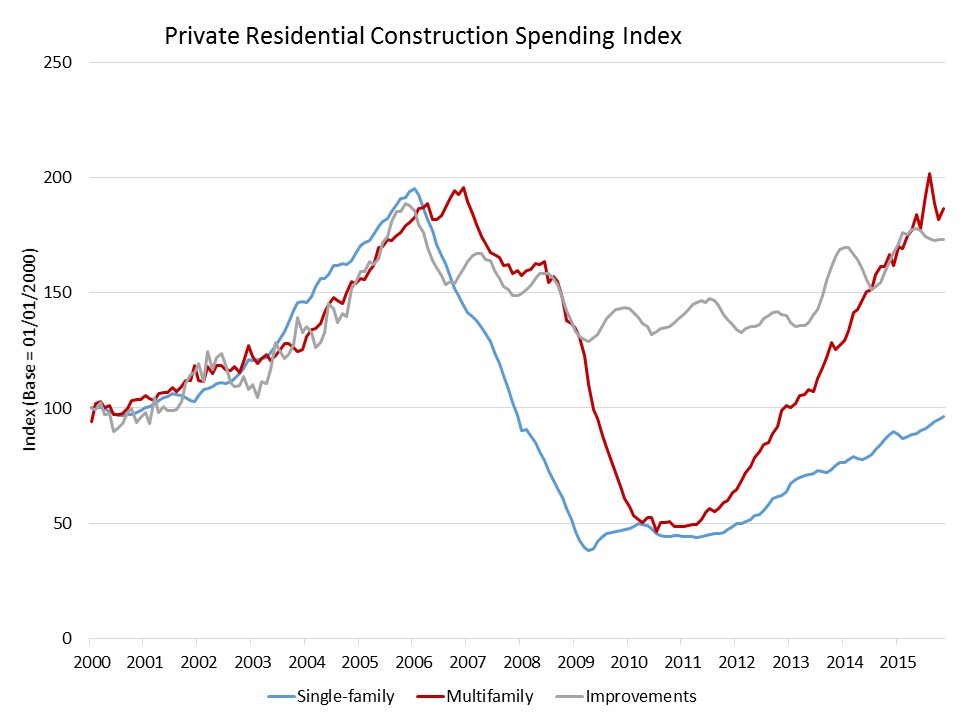 Construction spending has come a long way since the financial crisis hit America, according to a report from the U.S. Census Bureau on Monday.
Construction spending has come a long way since the financial crisis hit America, according to a report from the U.S. Census Bureau on Monday.
Spending in the construction sector rose to $1.097 trillion in 2015, up 10.5 percent from 2014's total expenditures of $993.4 billion and the highest yearly level since 2007, when spending stood at $1.148 trillion.
Month-over-month, construction spending in December 2015 was at an annual rate of $1,117 billion, up 0.1 percent from November's estimate of $1,116 billion. Year-over-year the December 2015 construction spending is up 8.2 percent from the previous year's estimate of $1,031.6 billion.
Private construction spending reached $824.0 billion in December 2015, down 0.6 percent from November's estimate of $828.8 billion, the Bureau said.
Residential construction came in at$429.6 billion in December, up 0.9 percent from November's estimate of $425.8 billion, while nonresidential construction fell 2.1 percent from $403.0 billion in November to $394.4 billion in December.
 In total, private construction in 2015 was $806.1 billion, up 12.3 percent from $717.7 billion spent in 2014. In the other hand, residential construction in 2015 was $416.8 billion, up 12.6 percent from the 2014 figure of $370.0 billion and non-residential construction was $389.3 billion, up 12.0 percent from $347.7 billion in 2014.
In total, private construction in 2015 was $806.1 billion, up 12.3 percent from $717.7 billion spent in 2014. In the other hand, residential construction in 2015 was $416.8 billion, up 12.6 percent from the 2014 figure of $370.0 billion and non-residential construction was $389.3 billion, up 12.0 percent from $347.7 billion in 2014.
In November, construction spending slipped for the first time in over a year. Spending in the construction sector dipped 0.4 percent in November 2015 to a seasonally adjusted annual rate of $1,122.5 billion, according a release from the U.S. Census Bureau of the Department of Commerce.
Recent reports have shown that increasing demand and low inventory levels are fueling home prices and are likely the driving factor of the uptick in construction spending
"The steady increase in residential starts in 2015 has produced a steady increase in the number of homes under construction although carrying them through to completion slowed a bit as labor shortages, especially finishing carpenters, slow the ability to get finishing touches done," said David Crowe, National Association of Home Builders Chief Economist and SVP.
Realtor.com Chief Economist Jonathan Smoke noted that the housing industry needs stronger growth in construction and that the picture will only worsen if this negative trend continues.
"At our current pace of activity and taking into account loss of housing stock due to disaster and dilapidation, we're building new units at less than half the pace at which we are forming households," Smoke said. The housing shortage only worsens if this remains the picture. Tight supply of homes for sale and low vacancies will continue to be the norm, and along with that, higher rents and prices.

 theMReport.com Your trusted source for mortgage banking news
theMReport.com Your trusted source for mortgage banking news








